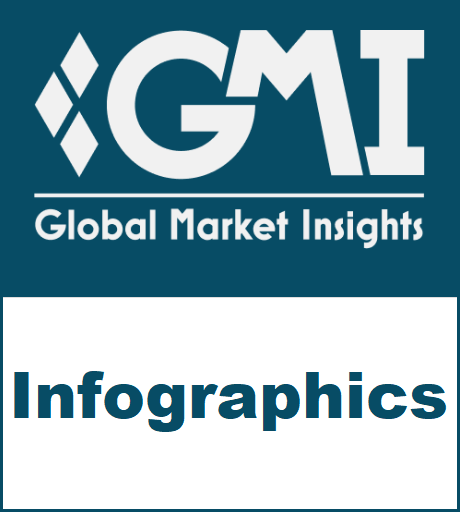Home > Pressrelease > Vitamin A Market size to surpass $905Mn by 2032
Vitamin A Market size to surpass $905Mn by 2032
- Published Date: December 16, 2022
Vitamin A Market size is anticipated to exceed USD 905 million by 2032, as per a recent research report announced by Global Market Insights Inc.
A high prevalence of vitamin A deficiency among younger children across developing countries will drive market share. The prevalence of vitamin A deficiency is considerably high across countries like Africa and Southeast Asia. Long-term deficiency of vitamin A can lead to a higher risk of respiratory diseases and infections. It can also be the cause for xerophthalmia and anemia.
Growing health consciousness, especially since the COVID-19 pandemic, has elevated the demand for dietary supplements to boost immunity. Vitamin A is commonly used in dietary supplements usually in the form of retinyl palmitate or retinyl acetate, and beta-carotene. Expanding sales of dietary supplements should support the demand for vitamin A in the pharmaceutical sector.
Growing use of vitamin A in animal feed products
Vitamin A market share from feed grade segment is anticipated to witness over 5% CAGR between 2023 to 2032. Animal nutrition feed products contain feed-grade vitamin A that is derived from synthetic sources that are cost-effective to produce. Vitamin A acetate is typically turned into dry powder as is more stable, while oily vitamin A acetate is frequently used in feed-grade vitamin A because it is more stable.
Feed-grade vitamin A is highly important to prevent growth issues in animals and protect the epithelium in older animals. As major players like BASF SE, Adisseo, and DSM are extending their presence in emerging countries and spending more on the creation of new vitamin-based products, the feed business is estimated to drive robust demand for vitamin A.
Expanding cosmetics sector to influence vitamin A demand
Vitamin A market from synthetic segment is forecasted to exceed USD 840 million by 2032. The synthetic versions of this vitamin include retinoid, beta-ionone, retinyl acetate, and/or retinyl palmitate. Retinol is derived from animal sources like beef liver, salmon, eggs, fish, cod liver oil, and shrimp. It is also highly recommended that retinoid users should refrain from taking additional vitamin A supplements.
Manufacturers of cosmetics and dietary supplements employ synthetic vitamin A in a variety of products. It is a crucial vitamin for skin health as it helps regulate the activities of skin cells. Factors like expanding cosmetics business, improving consumer standard of living, and more spending on cosmetic products should drive the demand for synthetic vitamin A.
Browse key industry insights spread across 378 pages with 378 market data tables and 25 figures & charts from the report “Vitamin A Market Size By Product (Food Grade, Feed Grade, Pharmaceutical Grade), By Type (Natural, Synthetic), By Application (Dietary Supplements, Food & Beverages, Animal Feed {Poultry [Layers, Broilers, Turkey], Cattle [Dairy, Beef, Calf], Swine, Aquaculture}, Personal Care & Cosmetics), COVID-19 Impact Analysis, Regional Outlook, Growth Potential, Price Trends, Competitive Market Share & Forecast, 2023 – 2032”, in detail along with the table of contents:
https://www.gminsights.com/industry-analysis/vitamin-a-market
Rising demand for fortified foods to boost vitamin A usage
Vitamin A market share from food and beverage application will witness over 5.5% CAGR from 2023 to 2032. In the food and beverage business, vitamin A is primarily employed in food fortification applications which involves the addition of micronutrients into processed foods. The demand for fortified foods and beverages is witnessing a rise due to surging health consciousness among consumers and the prevalence of vitamin deficiencies that can lead to health issues like anemia, scurvy, beriberi, and pellagra.
High sales of dietary supplements to augment market expansion
Sales of vitamins and nutritional supplements are highest in North America, with the United States and Canada accounting as major consumers. The report estimates that the North America vitamin A industry is estimated to reach a valuation of over USD 235 million by 2032. With the growing trend toward healthy living and rising healthcare spending in the U.S., the use of vitamins and nutritional supplements will elevate in the coming years. Availability of herbal supplements is also on the rise owing to increasing entrance of counterfeit items into the market
Strategic partnerships to complement vitamin A industry development
BASF, Adisseo, Zhejiang NHU Co. Ltd., DSM, Vitafor NV, and Nutrilo GmbH are some of the key players in the global vitamin A market. These companies are working on strategic developments, collaborations, and partnerships to improve their geographical presence. For instance, in March 2018, DSM and Mixfit announced a strategic agreement to deliver tailored nutrition solutions based on a complete set of health and activity measures. This unique alliance combines DSM's experience in key micronutrients with Mixfit's technological edge to deliver the ability to analyze health data in real-time, allowing for effective nutritional gap-filling and supporting of a healthy lifestyle.
Explore More on Related Topics:
Infographics
